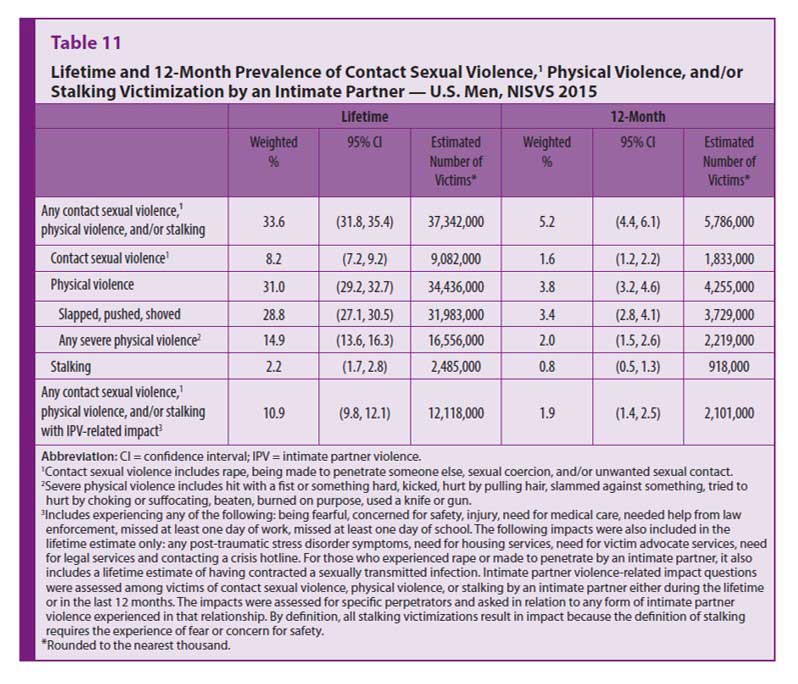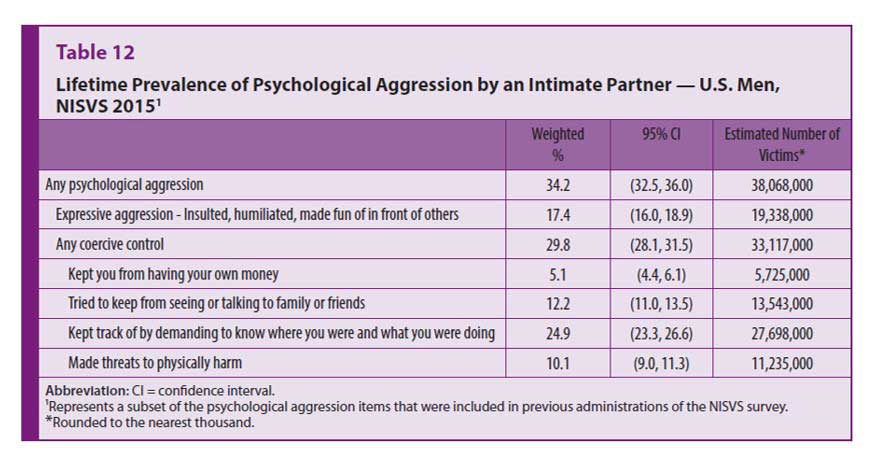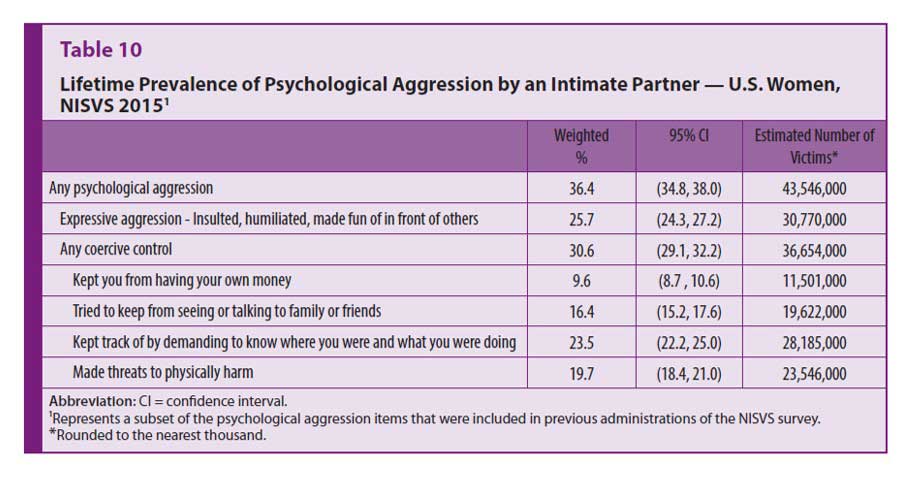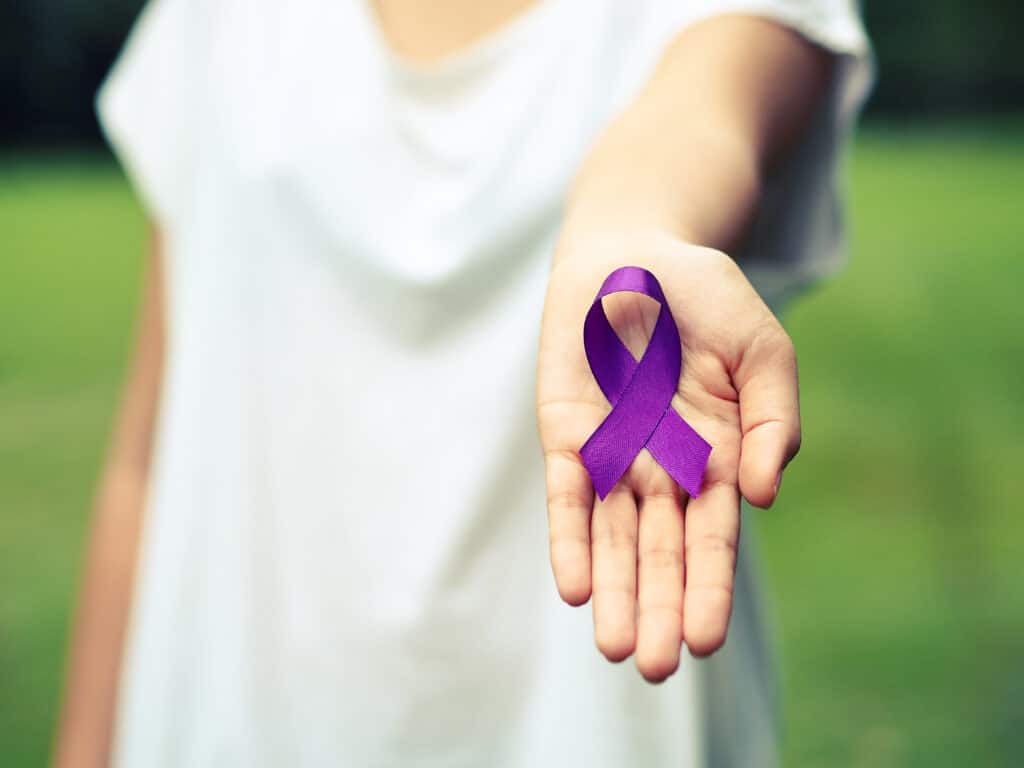Tom Lemons, Legal Correspondent
October 15, 2019
During the month of October, domestic violence (DV) victims join supporters and advocates to raise awareness and hold fundraising events for those who have suffered familial or intimate partner abuse. In addition to private funding, federal, state and local governments provide most of the financial aid to qualified non-profits, which usually come in the form of grants. In addition to non-profits, the federal government also provides money to courts and law enforcement agencies for specialized resources, training, and to expand facilities. Despite these resources being available for nearly 26 years, there is still a lot of confusion as to who are considered victims and what defines an act of domestic abuse. There are several studies that provide varying statistics on domestic violence, but depending on who you ask, the numbers can be vastly different.
At a glance, the most common online sources show that women are at a much greater risk of being victimized than their male counterparts. For example; the National Coalition Against Domestic Violence (NCADV) states that 1 in 4 women and 1 in 9 men experience severe intimate partner violence, 1 in 7 women and 1 in 25 men have been injured, 1 in 7 women and 1 in 18 men have been stalked, and the list goes on. The Centers for Disease Control (CDC) claims 1 in 5 women and 1 in 7 men suffer severe intimate partner violence. The Department of Justice (DOJ) provides a more specific estimate that shows 84% of victims are female. The most recent comprehensive study was released by the CDC in 2011 and updated in 2015. The values are determined by data collected from national and state-level agencies on intimate partner violence, sexual violence and stalking. But the numbers you see “at a glance” are not the big picture and often give the impression that males are almost always the perpetrator, and are rarely the victim.

Request a Free Consultation

The National Intimate Partner and Sexual Violence Survey delineates each element of IP and SV, Intimate Partner and Sexual Violence respectively, and separates each category by lifetime and twelve-month prevalence. For example: In table 11 of the report, 33.6% (lifetime) and 5.2% (12-month) of men were victims of sexual or physical violence, and or stalking, compared to women who were 36.4% (lifetime) and 5.5% (12-month). However, when you look at just physical violence in general, which includes being slapped, pushed, shoved, punched, choked, etc., men represent 31% (lifetime) and 3.8% (12-month) versus women at 30.6% and 2.9%, respectively. Psychological aggression by an IP is even closer in comparison, with 36.4% of women and 34.2% of men experiencing some kind of psychological aggression, like being humiliated in front of others, withholding money, keeping track of an IP’s whereabouts, and making threats of physical harm. Other forms of psychological aggression, like parental alienation and withholding intimacy and other, more subtle forms of aggression are not listed in the survey. After reviewing each element of the report, it is clear that certain widely used statistics do not give a fair representation of IP violence and aggression. But there are a few other factors that aren’t considered in the survey; those are the number of men and women who do not report violence to the authorities, and the way police interact with men and women during an investigation into claims of IP violence.


According to a report by the Department of Justice, Office of Justice Programs, women were treated differently by police during face-to-face interviews, regarding allegations of physical abuse by an IP. Exhibit 16 of the report shows that police were more likely to arrest male perpetrators when the alleged victim is female. Specifically, 36.4% of those who attacked women were arrested versus only 12.3% of women who attacked men. The same disproportionate results are present when police cases are referred to prosecutors, services are referred to victims, and advice is given by police on how to protect against future violence. There are only two factors that fell on the opposite side of the report; when police took no action at all and the frequency in which men and women report violence. According to the DOJ report, police failed to act on 19.2% of IP violence reported by men versus 11.1% of accusations by women. Also, the survey found that women were significantly more likely than men to report being victimized by an intimate partner, whether the type of violence was rape, physical assault, or stalking and whether the period was the victim’s lifetime or the 12 months preceding the survey. Moreover, women who were physically assaulted by an intimate partner averaged more assaults and suffered significantly more injuries than did their male counterparts. Despite these findings, experts suggest intimate partner violence should be considered first and foremost a crime against women and prevention strategies should reflect this fact.
There are at least 42 domestic violence shelters and other services available to women throughout Florida. Although there are no shelters dedicated specifically to male victims, there are some counseling and other resources available.
For more information on how the Ayo & Iken Law Firm can help you with issues pertaining to intimate partner violence, visit our website at www.myfloridalaw.com.

